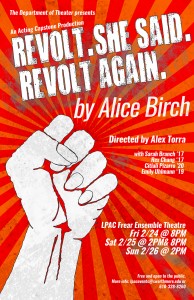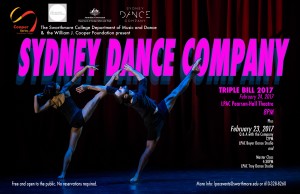We were saddened to learn recently of the death of Jeremy Stone ’57, a visionary and tireless advocate for peace and our Peace and Conflict Studies Program.
Jeremy J. Stone, a mathematician whose ideas about minimizing the possibility of a nuclear catastrophe influenced arms-control negotiators in the United States and the Soviet Union during the Cold War, died on Sunday at his home in Carlsbad, Calif. He was 81.
The cause was heart failure, said Steven Aftergood, his executor and a former colleague at the Federation of American Scientists.
Mr. Stone’s focus on arms reduction began in 1963 with what he called “an electric thought”: If the Soviets could be persuaded not to build a missile defense system, then perhaps the United States could be persuaded not to build one of its own.
“Both sides would then avoid the waste of expensive, ineffective systems that would, still worse, accelerate each side’s interest in buying offsetting offensive missile systems,” Mr. Stone wrote in “Every Man Should Try” (1999), one of his two autobiographies.
It was a counterintuitive argument: that national missile defenses could encourage both sides to build more offensive weapons. But it was central to the 1972 Antiballistic Missile Treaty, which limited the number, type and placement of missiles that the United States and the Soviet Union could deploy to shoot down attacking nuclear missiles.
Mr. Stone was not the only policy expert, in or out of the government, who thought that way. But Matthew Evangelista, the author of “Unarmed Forces: The Transnational Movement to End the Cold War” (2002), and other arms-control historians said that Mr. Stone made an important contribution: the regular trips he took to the Soviet Union to cajole scientists and foreign-policy experts about the wisdom of limiting missile defense systems. His wife, Betty Jane Yannet, also a mathematician (better known as B. J. Stone), learned Russian to help him on his missions.
“He was one of the leading figures in arms control,” Mr. Evangelista said. “It took a while for the Soviet side to appreciate the arguments, and he was involved in contacts with Soviet scientists over many years to persuade them. He changed a lot of minds.”
By 1966, Mr. Evangelista said, some Soviet scientists who were involved in military research and were close to Soviet leaders like Prime Minister Aleksei N. Kosygin were calling an American plan to limit missile defenses “Jeremy Stone’s proposal.”
Morton Halperin, who served three White House administrations in national security and diplomatic positions, said in an interview that Mr. Stone “understood what many advocates don’t: that if you want to influence governments, you have to give them an idea for what they can actually do rather than lecture them about peace or arms control.”
During the debate over the Strategic Defense Initiative, or Star Wars, the space-based missile defense system pushed by President Ronald Reagan, Mr. Stone told a meeting of Soviet scientists in 1985 in Moscow that disarmament was the best response to the White House plan.
“You people are saying that if we go ahead with Star Wars, there can be no disarmament,” Mr. Stone is quoted as saying in “The Master of the Game” (1988), a biography of the nuclear-arms negotiator Paul H. Nitze written by Strobe Talbott. “I agree, but you should turn it around. You should see that if both sides go ahead with disarmament, there can be no Star Wars.”
Mr. Talbott, a former deputy secretary of state under President Bill Clinton who is now president of the Brookings Institution, said in an interview that Mr. Stone “understood the technology and theology of nuclear war.”
Jeremy Judah Stone was born on Nov. 23, 1935, in Manhattan. His father was I. F. Stone, the radical journalist who published the muckraking newsletter I. F. Stone’s Weekly. His mother, Esther, ran the newsletter’s administrative operations.
After attending the Bronx High School of Science, Mr. Stone attended the Massachusetts Institute of Technology for one year before transferring to Swarthmore College, from which he graduated. He met Ms. Yannet while they were students there. In 1960, he received a Ph.D. in mathematics from Stanford University.
After working at the National Bureau of Standards, the RAND Corporation and the Stanford Research Institute, he joined the Hudson Institute, which was run by the physicist Herman Kahn, a leading thinker on nuclear strategies.
Mr. Kahn assigned Mr. Stone to study the hypothetical evacuation of American cities if a Soviet invasion of Western Europe were to be met with an American first strike, leaving a retaliatory strike by Moscow inevitable. In his report, Mr. Stone concluded that it would take three days to evacuate cities in the Northeast by car and rail. When he briefed the federal Office of Civil Defense, which had paid for the study, he was asked if he thought the plan would work.
“Thanks so much for asking,” he recalled replying. “No, I don’t think it would work at all!”
In 1970, he took over the Federation of American Scientists, which was formed by some of the scientists who had built the first atomic bomb and who were dedicated to reducing nuclear dangers. Mr. Stone used a monthly newsletter to turn the federation into a policy research organization that studied issues like nuclear proliferation, energy and government secrecy.
It also became a platform for Mr. Stone’s views on arms control and the value of scientific exchanges with the Soviet Union and China, and for his defense of the dissident Soviet physicist Andrei D. Sakharov.
Mr. Stone left the organization in 2000 and formed his own firm, Catalytic Diplomacy, to try to privately resolve conflicts in countries like Cambodia, Kosovo and Peru.
Mr. Stone is survived by a sister, Celia Gilbert, and a brother, Christopher Stone. His wife died last year. They had no children.
Mr. Stone never wanted to be a journalist like his father, whose views twice jeopardized the son’s security clearance. But Jeremy Stone, like his father, was a gadfly, and in recent years he helped to perpetuate his father’s memory by establishing an I. F. Stone website and helping to raise money for a documentary about him.
“With a free press,” Mr. Stone wrote recently, repeating what his father had told him, “if the government does something wrong, it will become known and the government can fix it. But if something goes wrong with a free press, the country will go straight to hell.”
Correction: January 6, 2017
Because of an editing error, an earlier version of this obituary misstated the middle name of Mr. Stone’s wife. She was Betty Jane Yannet, not Betty Jean.
 nce, video, and community engagement. We are a grassroots organization in Philadelphia but our roots travel far to a little-known location where dance thrives among the underprivileged. Please join us to support the community arts initiative at Subhasgram in the outskirts of Kolkata.”
nce, video, and community engagement. We are a grassroots organization in Philadelphia but our roots travel far to a little-known location where dance thrives among the underprivileged. Please join us to support the community arts initiative at Subhasgram in the outskirts of Kolkata.”





